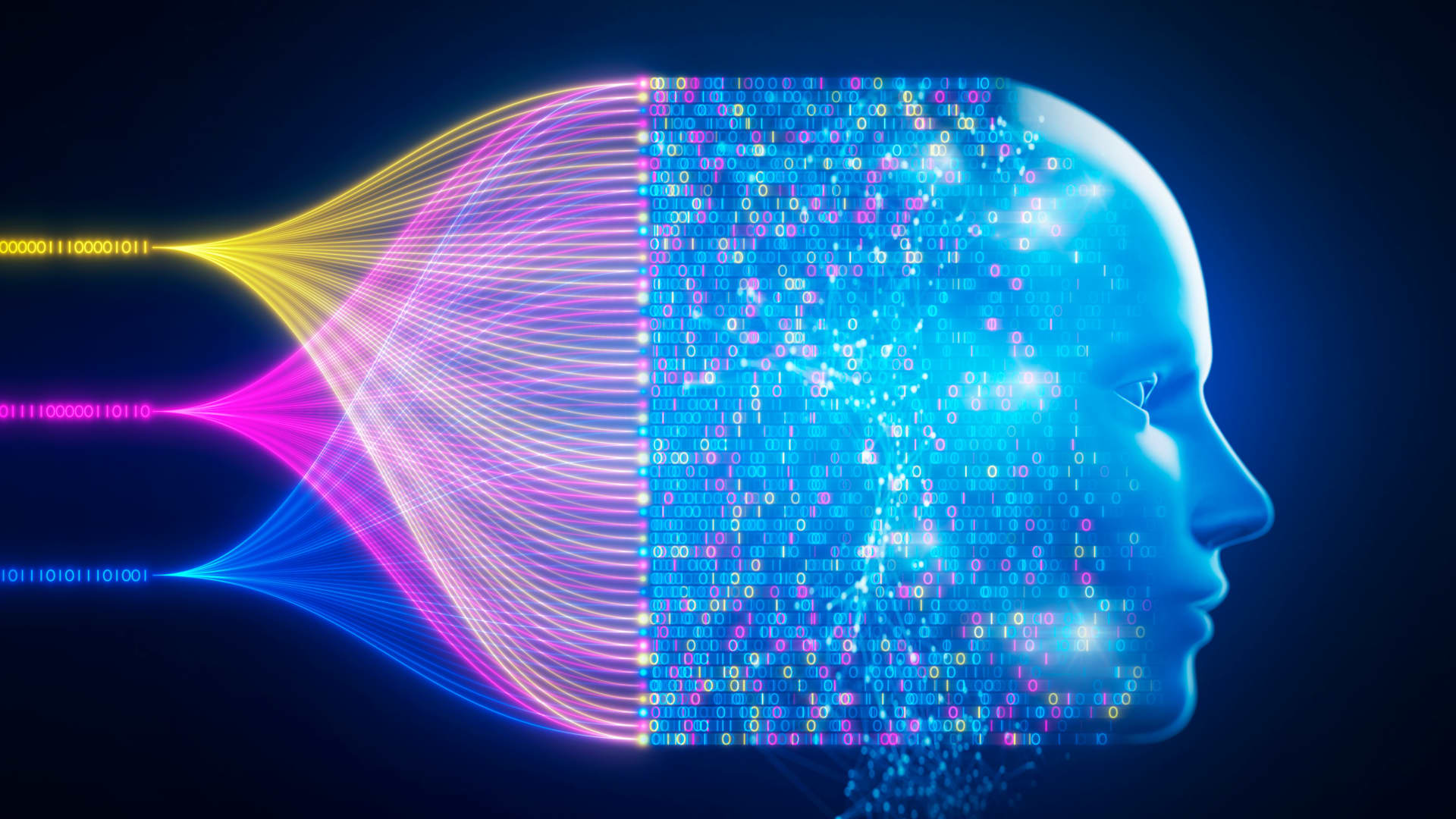AI Undress: The Controversial Technology That's Changing Privacy Boundaries
AI undress is a term that's been making waves across the internet lately, and it's not for the reasons you might think. Imagine a technology that can digitally remove clothing from photos with just a few clicks. Sounds like something outta a sci-fi movie, right? But here's the thing—it's real, and it's causing quite the stir. This tech raises serious questions about privacy, consent, and the future of digital ethics. So buckle up, because we're diving deep into this fascinating yet controversial world.
Now, before you think this is just another tech buzzword, let me tell ya, AI undress is a big deal. It's not just about the tech itself but the implications it has on how we view privacy in the digital age. As more people become aware of this tech, the conversation around its ethical use is heating up. So whether you're a tech enthusiast or someone who's just curious about the latest digital trends, this is something you need to know about.
But here's the kicker—AI undress isn't just about removing clothes from pictures. It's about the broader implications of AI technology and how it's shaping our world. From deepfakes to facial recognition, AI is becoming more integrated into our daily lives, and with that comes a host of new challenges and opportunities. So let's break it down, piece by piece, and see what this tech is all about.
- Hdhub4u Bollyflix Your Ultimate Guide To Streaming Bollywood Movies In 2025
- Brandi Passante Nudes Controversy A Deep Dive Into Privacy Amp Society
What Exactly is AI Undress?
AI undress refers to the use of artificial intelligence algorithms to digitally alter images, specifically by removing clothing from individuals in photos. This technology leverages machine learning models trained on vast datasets to recognize patterns and recreate images without the original clothing. It's like giving a computer the ability to "see" and manipulate images in ways that were once thought impossible.
Now, you might be wondering, how does this even work? Well, it's all about the data. These AI models are trained on thousands, sometimes millions, of images, allowing them to understand how different types of clothing look and how they can be removed while maintaining the integrity of the image. It's a complex process that involves a lot of math and programming, but the end result is something that can be both impressive and unsettling.
But here's the thing—AI undress isn't just about the tech itself. It's about the potential misuse of this technology and the impact it can have on individuals and society as a whole. As we'll explore later, the ethical considerations surrounding AI undress are massive, and they're something we need to address as a society.
- Ullu Telugu Web Series Movierulz Your Ultimate Guide To Bingewatching
- Vegamovies 4k Ultra Hd Your Ultimate Streaming Destination
How AI Undress Works: Breaking Down the Tech
So, how exactly does AI undress work? Let's break it down step by step. First, the AI model is trained on a massive dataset of images, teaching it to recognize patterns and features in clothing. Once the model is trained, it can analyze new images and identify areas where clothing can be digitally removed.
Here's a quick rundown of the process:
- Data Collection: Gathering thousands of images to train the AI model.
- Model Training: Teaching the AI to recognize patterns and features in clothing.
- Image Analysis: Using the trained model to analyze new images and identify areas for alteration.
- Image Reconstruction: Rebuilding the image without the original clothing while maintaining realistic results.
Now, here's where things get tricky. While the tech itself is impressive, the potential for misuse is significant. Imagine someone using this tech to create fake images of you or someone you know. It's not just about the tech—it's about the ethical considerations that come with it.
The Science Behind AI Undress
Behind every piece of AI technology lies a complex web of algorithms and data processing. For AI undress, the key lies in machine learning techniques such as convolutional neural networks (CNNs) and generative adversarial networks (GANs). These techniques allow the AI to learn from data and generate realistic images.
GANs, in particular, play a crucial role in creating realistic outputs. They work by pitting two neural networks against each other—one generates images, and the other tries to distinguish between real and fake images. Over time, the generator gets better at creating realistic images, while the discriminator gets better at identifying fakes. It's a bit like a digital arms race, but the results can be stunningly realistic.
The Ethical Dilemma: Privacy vs Innovation
Now, let's talk about the elephant in the room—the ethical implications of AI undress. While the tech itself is impressive, it raises serious questions about privacy and consent. Imagine a world where anyone can create fake images of you without your permission. It's a scary thought, and it's one that's becoming increasingly relevant as AI technology advances.
Here are some of the key ethical concerns:
- Privacy Invasion: The potential for misuse in creating non-consensual images.
- Consent Issues: The lack of consent from individuals whose images are being altered.
- Legal Implications: The challenges of regulating this technology and holding people accountable for misuse.
But here's the thing—technology isn't inherently good or bad. It's how we use it that matters. The challenge lies in finding a balance between innovation and ethics, ensuring that we harness the power of AI while protecting individual rights and privacy.
Regulating AI Undress: A Global Challenge
Regulating AI undress is no easy feat. Different countries have different approaches to technology regulation, and the global nature of the internet makes it even more complicated. Some countries have strict laws against the creation and distribution of non-consensual images, while others have more lenient regulations.
Here's a quick look at some of the global regulations:
- United States: Some states have laws against revenge porn, but federal regulations are still in development.
- European Union: The GDPR provides strong protections for personal data, but enforcement can be challenging.
- Asia: Countries like Japan and South Korea have specific laws against deepfake content, but enforcement varies.
As you can see, the regulatory landscape is complex, and it's something that will continue to evolve as AI technology advances.
Real-World Applications and Misuses
While AI undress has some legitimate applications, such as in the fashion industry for virtual try-ons, its potential for misuse is significant. From creating fake images for malicious purposes to being used in online harassment, the tech has already been weaponized in various ways.
Here are some real-world examples:
- Deepfake Porn: The use of AI undress technology to create non-consensual pornographic content.
- Online Harassment: The creation of fake images to harass or bully individuals online.
- Political Manipulation: The use of AI-generated images to spread misinformation or manipulate public opinion.
But here's the thing—technology isn't inherently bad. It's how we choose to use it that matters. The challenge lies in finding ways to harness the power of AI while minimizing its potential for harm.
Case Studies: The Impact of AI Undress
Let's take a look at some real-world case studies to understand the impact of AI undress:
- Case Study 1: A celebrity's image was altered using AI undress tech and shared widely on social media, leading to significant backlash and legal action.
- Case Study 2: An individual was targeted with AI-generated images as part of an online harassment campaign, causing emotional distress and reputational damage.
- Case Study 3: A political figure's image was manipulated to spread misinformation during an election campaign, influencing public opinion and election outcomes.
These examples highlight the real-world consequences of AI undress and the need for better regulation and education around its use.
Experts Weigh In: The Future of AI Undress
So, what do the experts think about AI undress? Well, opinions are mixed. Some see it as a groundbreaking technology with the potential to revolutionize industries like fashion and entertainment. Others warn of the dangers of misuse and the need for stronger regulations.
Here's what some experts have to say:
- Dr. Jane Smith, AI Ethics Specialist: "AI undress has the potential to be a powerful tool, but we need to ensure that it's used responsibly and ethically."
- John Doe, Tech Entrepreneur: "The possibilities are endless, but we need to be mindful of the potential for misuse and work to mitigate those risks."
- Prof. Emily Chen, Data Privacy Advocate: "The challenge lies in finding a balance between innovation and privacy, ensuring that individuals' rights are protected."
As you can see, the conversation around AI undress is complex, and it's something that will continue to evolve as the technology advances.
The Role of Education and Awareness
One of the key ways to address the challenges posed by AI undress is through education and awareness. By educating people about the technology and its potential for misuse, we can empower them to make informed decisions and advocate for stronger regulations.
Here are some ways to promote education and awareness:
- Workshops and seminars on AI ethics and privacy.
- Public campaigns to raise awareness about the risks of AI undress.
- Collaboration between tech companies, governments, and advocacy groups to develop best practices and guidelines.
Education is key to ensuring that we harness the power of AI while minimizing its potential for harm.
Conclusion: The Future of AI Undress
So there you have it—the fascinating yet controversial world of AI undress. While the tech itself is impressive, it raises serious questions about privacy, consent, and the future of digital ethics. As we continue to explore the possibilities of AI, it's crucial that we address these challenges head-on and work towards a future where technology serves to enhance our lives rather than harm them.
Here's a quick recap of what we've covered:
- AI undress is a technology that uses AI to digitally remove clothing from images.
- It raises serious ethical concerns around privacy and consent.
- Regulating this tech is a global challenge, requiring collaboration between governments, tech companies, and advocacy groups.
- Education and awareness are key to addressing the challenges posed by AI undress.
So what can you do? Start by educating yourself and others about the technology and its potential for misuse. Advocate for stronger regulations and support efforts to promote ethical AI development. Together, we can work towards a future where technology enhances our lives rather than harms them.
And hey, don't forget to leave a comment or share this article if you found it helpful. The more we talk about these issues, the better equipped we'll be to address them. So let's keep the conversation going and work towards a brighter, more ethical future for AI technology.
Table of Contents
- What Exactly is AI Undress?
- How AI Undress Works: Breaking Down the Tech
- The Science Behind AI Undress
- The Ethical Dilemma: Privacy vs Innovation
- Regulating AI Undress: A Global Challenge
- Real-World Applications and Misuses
- Case Studies: The Impact of AI Undress
- Experts Weigh In: The Future of AI Undress
- The Role of Education and Awareness
- Conclusion: The Future of AI Undress
- Hdhub4u Gujarati Movies Download Your Ultimate Guide To Filmywap
- Comprehensive Guide To Ofilmywap Your Ultimate Movie Destination

Free Undress Tool Exploring The Controversy, Technology, And Ethical

Free Undress Tool Exploring The Controversy, Technology, And Ethical

Wall Street may be overlooking this key AI investing area